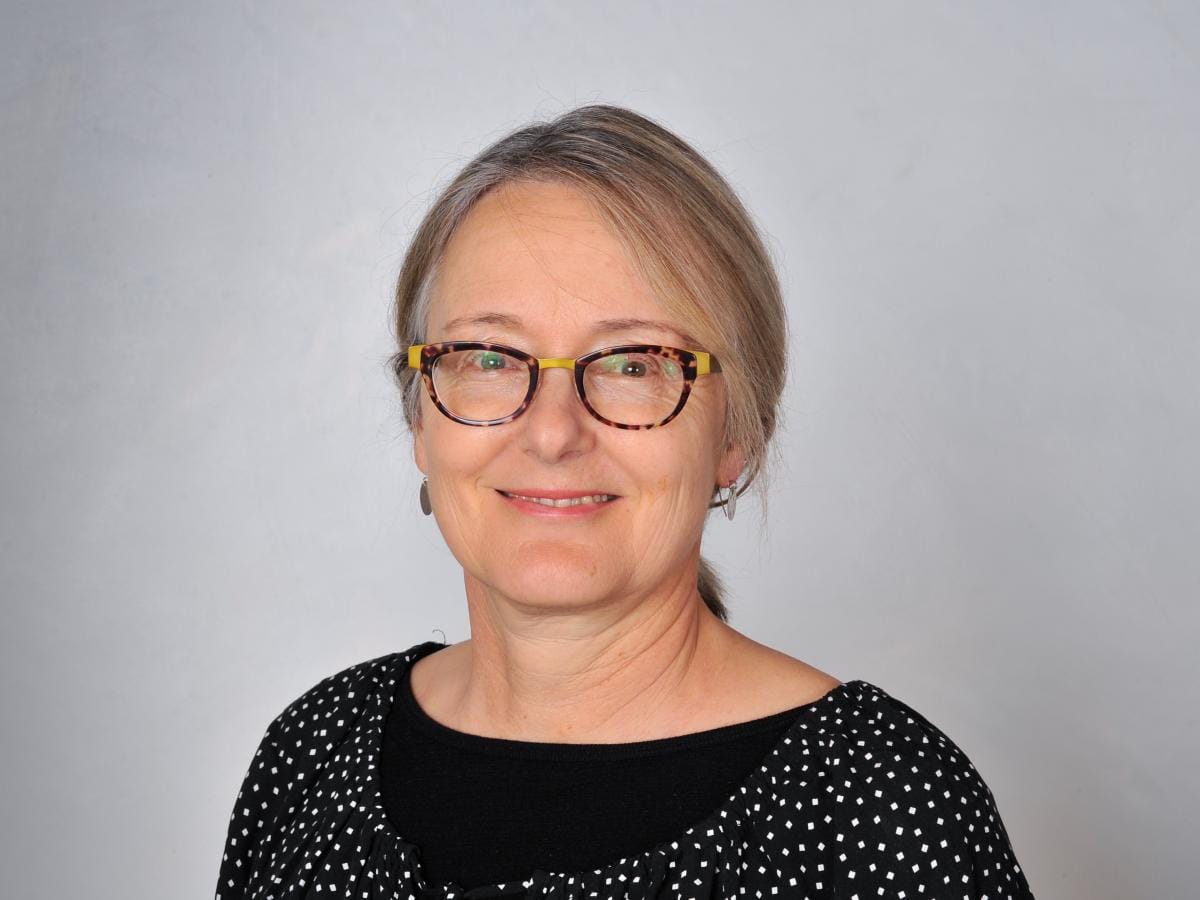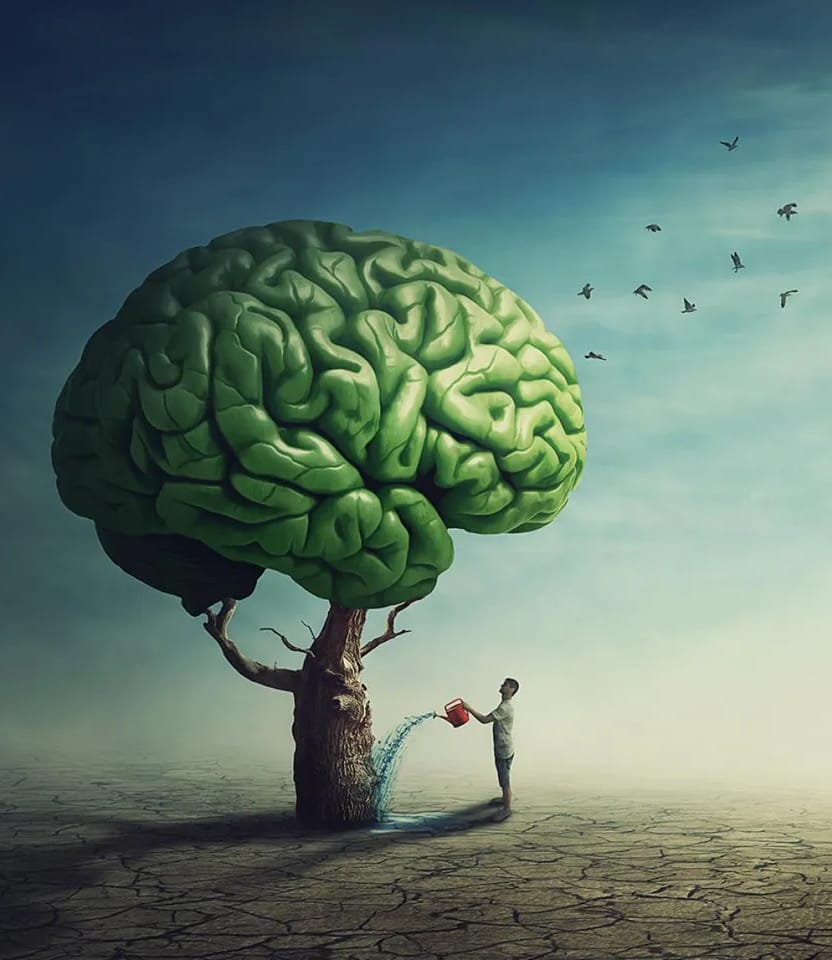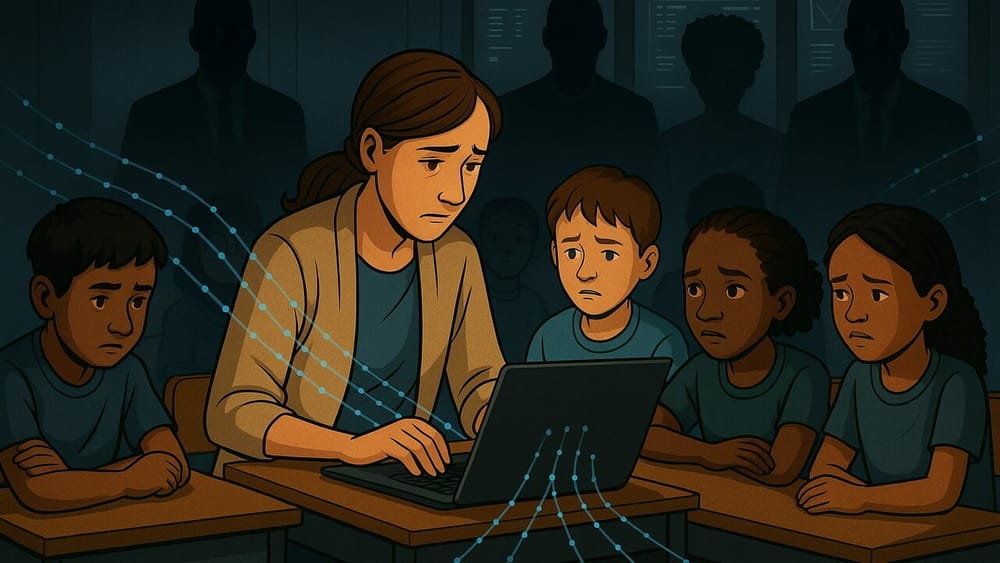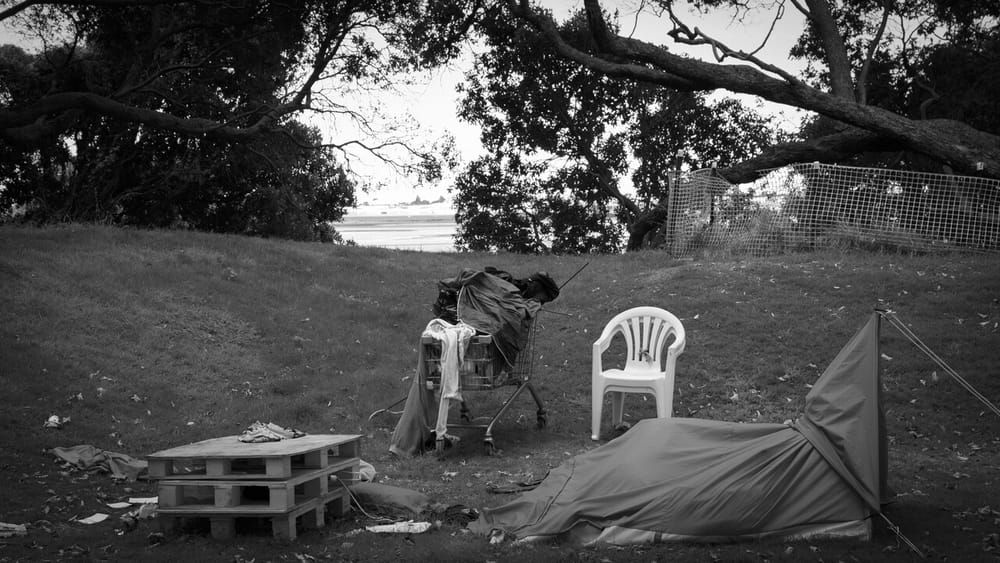
The Lovepost has conducted an extensive investigation into the realm of psychiatric drugs, thoroughly examining their various aspects and implications. I have a personal reason for wanting to look beyond pharmaceutical solutions like fast-acting and more varied antidepressants. I have had a positive experience with prescribed antidepressants, but the limits of medication left me wondering about other, more participatory forms of mental health treatment. What choices are accessible now?
I was given antidepressants while I was a first-year university student. I was punishing my body with too much alcohol, caffeine and cigarettes; and not giving myself enough sleep, water, exercise or nutrition. I went to the students’ GP lamenting my fatigue, and the unpredictable bursts of crying and apathy that seemed to be beyond the normal teenage range. The doctor unironically told me to try going out for a run.
My blank stare resulted in my first prescription for a selective serotonin reuptake inhibitor (SSRI) called Fluoxetine or Prozac. My mind and body were numbed and my boyfriend kept asking, "Why don't you care about anything?" After eight months, I questioned whether that medication was right for me.
I do not wish to discredit the medical service I received. I consider myself to be in one of the most privileged demographics for health care: I am White, young, able-bodied and educated; living in a metropolitan area of New Zealand. However, even with all the fortunate access I had to modern medicine, my healthcare system seemed to operate with a huge blind spot. It did not seem to have been designed to recognise or facilitate treatment of the unmeasurable symptoms of my situation. Reflecting on this, I have concluded that I might possibly have been depressed, but I was certainly feeling lonely and disconnected. Medication alone could not have cured that.
What else is accessible to the next young adult in distress, and what pathways are taking shape for the future? It’s easy to look back in horror at outdated attitudes toward mental health, but how holistic is the approach to mental health in the 21st century? Practitioners can medicate, but do they work within an infrastructure which aims to alleviate all the intangible feelings that come with (or cause) mental illness or distress? Do they consciously give thought to the way that definitions will vary from culture to culture? In this article, I delve into these inquiries and more as I seek to uncover the available options and evolving pathways for young adults facing distress.
When his Heart is afflicted and has tasted sadness,
behold his Heart is closed in and darkness is in his body
because of anger which is eating up his Heart.
This excerpt from an Egyptian manuscript dated around 1500 BCE may well be the first recorded acknowledgment of the afflicted human mind. Many centuries would pass before the idea of psychology became recognised as having a place in society.
The late 19th century was a particularly significant time for developments in psychology. The first experimental psychology lab opened in 1883, Sigmund Freud began offering therapy to patients in 1886, Principles of Psychology by William James was published in 1890, and the Law of Effect was developed in 1905 by Edward Thorndike; paving the way for behaviourism and the field we now call psychology. Scientific understanding of the human brain and behaviour has progressed rapidly. However, understanding the brain is one thing. Treating the various mental disorders that affect daily human existence is another.
The history of mental health treatment is at times a shocking story of experimentation, pain and degradation. Before the 20th century, women who experienced mood swings, fluctuating libido—essentially any behaviour that wasn't deemed acceptable—were at risk of being labelled hysterical. They were subjected to ‘treatments’ including leeches on the abdomen, being hung upside down to reposition the uterus, and rest cure—forced bed rest with all mental and physical stimulation removed for indefinite periods of time. In the 20th century, surgical lobotomies involved cutting into the prefrontal lobe of the brain to cure mental disorders such as schizophrenia and depression—one of the few psychiatric treatments to receive a Nobel prize. Misunderstandings of mood disorders categorised certain mental illnesses as demonic possession, and traumatic rituals such as exorcism were performed on people of all ages. Asylums, straight jackets, ice water baths, insulin coma therapy—the long list of terrifying responses to mental disorders makes one grateful for all the progress that has been made in mental health treatment. That is not to say that treatment has been perfected. The understanding and response to mental illnesses are still evolving, and the current mental health support industry is chronically overworked and underfunded.

Mental health recognition in law
The idea that mental health should be a subject of public policy and responsibility is quite new. A century ago, mental wellbeing was absent from international policy and legal frameworks. One milestone was the 1948 establishment of the World Health Organisation, a specialised agency of the United Nations responsible for international public health. In the same year, the first International Congress on Mental Health took place in London, producing international definitions of mental health and mental hygiene.
Mental hygiene refers to all the activities and techniques which encourage and maintain mental health. Mental health is a condition, subject to fluctuations due to biological and social factors, which enables the individual to achieve a satisfactory synthesis of his own potentially conflicting, instinctive drives; to form and maintain harmonious relations with others; and to participate in constructive changes in his social and physical environment.
Just a few months later, the Universal Declaration of Human Rights (UDHR) was written: the first international standard of freedoms and rights for all peoples and all nations. With 30 articles translated into over 500 languages, the UDHR paved the way for more than 70 human rights treaties which are applied today on a permanent basis at global and national levels.
Although the UDHR is not a legally binding instrument, it establishes a fundamental set of human rights that applies to everyone. Article 1 states, “All people are free and equal in rights and dignity.” Article 25 states:
Everyone has the right to a standard of living adequate for the health and wellbeing of himself and of his family, including food, clothing, housing and medical care and necessary social services, and the right to security in the event of unemployment, sickness, disability, widowhood, old age or other lack of livelihood in circumstances beyond his control.
For the first time in human history, these articles represent global agreement that all people have rights, simply by virtue of being human. People with mental illnesses were protected by their rights, and the basic conditions of their lives were safeguarded when compromised by mental health struggles.
This legal infrastructure means that mental health disorders which significantly impair someone's wellbeing are now recognised as a disability in the eyes of government (although there is great variation worldwide in terms of what is recognised). Legislation such as the United Kingdom 1995 Disability Discrimination Act consciously adjusted the policy language around disability to "physical or mental impairment which has a substantial and long-term adverse effect on his ability to carry out normal day-to-day activities.” Rights-based language creates an entitlement for every person to be enabled to realise their full rights, and to receive essential benefits and support. Individual countries have recently written sweeping laws to tackle the marginalisation and stigmatisation of mental health issues, such as the Mental Health Parity and Addiction Equity Act of 2008 and the Affordable Care Act of 2010 in the United States.
An aspirational commitment to the recognition of mental wellbeing has been made. Treaties and constitutions state that the highest attainable standard of health is a fundamental human right—but without clearly recognising the mental as well as the physical dimensions of health. There is as yet no codified international legal protection specific to mental health.
Globally, mental health does not yet enjoy parity with physical health in terms of budgeting and attention. The World Health Organisation’s 2014 report estimated that less than 5 percent of global governments’ health expenditures are allocated to mental health—and the percentage is significantly smaller in lower-income countries. Around one-third of countries still have not written a mental health policy.
Clearly, every individual’s mental health choices are determined by this huge geographical disparity. Within each mental healthcare system, the range of individual choices to respond to mental health challenges or distress has also changed over time.
The rise of cognitive behavioural therapy
Pharmaceuticals are one approach to managing health and wellbeing. In the last half-century, the passive receipt of medication has been complemented by the participatory healing relationship, in which a distressed person is assumed to have the capacity to manage their own feelings and behaviours.
The field of behavioural psychology can be traced back to the early 1900s. Aaron Beck, an American psychiatrist, blended cognitive therapy (which explores thought in order to change one’s moods) with behavioural therapy (which asks how thoughts affect one’s actions and choices) to establish cognitive behavioural therapy or CBT in the 1960s.
Traditional talk therapy and psychotherapy focused on extensive discussions of a person’s past events and actions, and often on their childhood. CBT was novel because it emphasised a person’s current problems and thoughts, and subsequently asked how these could be managed. Some concepts of CBT have become familiar, including general advice such as critically questioning fearful thoughts, journaling as a tool of self-reflection, and breathing techniques.
Dr Fiona Mathieson has been a CBT practitioner for 30 years. She is a university lecturer, a fellow of the New Zealand College of Clinical Psychologists, and a member of the Aotearoa NZ Association of Cognitive Behavioural Therapies. Mathieson told The Lovepost how CBT works. “How we think about, or interpret a situation affects how we feel, how our body feels and how we behave. How we think about situations is thought to be influenced by our belief systems, which come out of how we have made sense of our past experiences."
CBT is based on the belief that by altering your thoughts, you can change how you feel and behave. The process begins by identifying unhelpful thoughts. Once these are understood, a person can learn alternative patterns of thought and behaviour which improve mood and mitigate feelings like anxiety and depression.
Fundamental to CBT is each person’s ability to target the sphere of life that is within their control. External forces and the actions of others are beyond anyone’s control, but each person does control their own perception and response to situations. For example, if you are rejected by a potential date, CBT might propose that it was not the act of being rejected which caused negative feelings. Rather, your interpretation of rejection triggered negative responses—and it is within your power to change your interpretation.
Dr Mathieson portrays the CBT process as collaborative, with the therapist taking a "guided discovery approach, helping the client to develop awareness of their thoughts, and build skills to check the facts and consider alternative explanations for events." Clients complete independent homework tasks between sessions, and provide feedback to guide every session. Together, therapist and client identify and build on the client’s own strengths to find a "shared formulation of how behavioural strategies—though understandable given the person's beliefs—may be maintaining the person's distress."
CBT’s short duration and structured nature helped to make it popular and accessible. Unlike extended talk therapies, CBT is typically designed as a three- to ten-month commitment, with one hour-long session per week. This makes CBT more affordable than traditional therapies. Although mostly used in individual face-to-face therapy, it also can be used in groups, online or in apps, and across a range of public, private and correctional settings. The programme includes strategies such as goal setting, breathing techniques, visualisation, and mindfulness to alleviate emotional distress and self-defeating behaviour. Mathieson summarises that the whole programme aims to help clients develop the skills to “be their own therapist.”
Through the years, a great deal of research has evaluated the application of CBT across a wide range of presenting issues. Dr Mathieson attributes this wide relevance partly to "a growing emphasis on acknowledging and building on clients’ strengths, rather than having such a focus on problems." Notably she sees a "third wave" of cognitive behaviour therapies emerging, including Acceptance and Commitment Therapy (ACT), Dialectical Behaviour Therapy (DBT) and Compassion-Focused Therapy.
Current work also seeks to address some of the limits of CBT, as Mathieson explains:
"CBT undoubtedly has Westernised roots and an emphasis on the individual, which does not align well with family [or] wider social group ways of understanding and working with mental health difficulties. In recent years, a lot of work and research has gone into adapting CBT to other cultural groups, along with gender and sexually diverse groups. This has been exciting to see. However, as well as developments in CBT, it is also exciting to see alternative approaches to mental wellbeing being developed by clinicians from diverse groups."

Remote access to mental health resources
When a person feels distressed, where does their search for help begin? Millions of people across the globe google "how to be happy.” In the United Kingdom alone, "depression" is googled every two seconds. Imagine the emotional roller coaster that is recorded in the search history of distressed or lonely people as they seek information or affirmation.
In the timeframe of humanity, self-directed information access happened only in the last blink of an eye. For millennia, humans shared information through word of mouth, art or letters, books, radio and television broadcasting. Psychiatric or academic texts were not instantly or publically available. In the mid-1990s the World Wide Web suddenly let loose an exponential quantity of content.
This content has had a huge impact on mental health. With access to a whole world of information and potential insights, anyone can self-assess and gain perspective on their own mental state.
American psychiatrist Dr Ivan Goldberg saw the potential for people to begin the journey of helping themselves by evaluating their own feelings. In 1993 he published the Goldberg Depression Test. Anyone who answers 18 simple questions online will receive one of six assessments on a numerical scale, describing the significance of their symptoms and recommending whether they should see a doctor. While not a substitute for a doctor's diagnosis, this online resource was (and still is) fundamental in obtaining a free, easy-to-use, initial, private mental health perspective.
Thirty years later, apps designed for mental, emotional and spiritual wellbeing can be accessed at the touch of a button. As many as 20,000 mental health apps exist today, including market dominators Calm and Headspace. Apps now claim to dispel anxiety by offering a narrated wander through the lavender fields of Provence, or daily group sessions with a global meditation community. The popularity and profitability of these apps has been steadily increasing: in 2022 the global mental health apps market was valued at 5.2 billion USD. That number is expected to grow 15.9 percent every year from 2023 to 2030.
To consider the intersection of technology and mental wellbeing, The Lovepost spoke with the Obama Foundation’s 2023 Asia-Pacific Leader Kii Winston Small. Small created the SaySo Project, a digital journaling platform for young people in New Zealand who lack access to mental health and wellbeing services because of their location or other factors beyond their control.
Small explained that, while digital storytelling platforms are still in early development, their potential is huge:
“The feedback, in particular the testimonials we have received from [SaySo] users have aided us in progressing forward. For example, sometimes journaling prompts are not needed for users who already have experience in expressing their thoughts through voice memos or writing notes.
“Little stories that the data tells us, coupled with stories from past and present users, [have] allowed us to map the future of SaySo into a place that is more inclusive than ever before. The potential of SaySo is larger than anyone in the team can comprehend, because of the different ways people have been journaling. Globally, we think this tool has the potential to help people rehabilitate, document their travels and build emotional intelligence.”
Small believes that treating mental health challenges necessarily involves stepping beyond each person’s comfort zone. "As we become comfortable with the uncertainty of recovery, our emotions and our futures; I believe we grow into spaces we could never have constructed previously. In order to have something you've never had, you must do something you've never done."
Remote digital resources have some key features that stand out from traditional in-person methods. Mobile platforms are intentionally accessible and convenient. A Harvard University research article published in 2018 concluded that "mobile apps are a good choice for psychological treatment delivery compared to other platforms due to (I) ease of habit, (II) low effort expectancy, and (III) high hedonic motivation."
There are notable benefits. Free or cost-effective remote resources remove financial barriers to treatment. Apps enable people who may not have access to in-person treatment to receive support. They can also be accessed at any time, offering 24-hour service to those who need it. Asking for help can be daunting. Without the need for face-to-face interaction, app users can seek support from the place where they feel safest.
On the flip side, mobile mental health apps come with some risks. The hedonic or pleasure-seeking motivation speaks to the power technology has over us. The prospect of companies with a profit motive introducing addictive technologies to the sphere of mental health treatment is unsettling. Should a distressed person need to turn to an app to provide a dopamine rush and consequent pleasure? Who will regulate abuses, and what use will be made of vulnerable users’ data? Finally, a solitary person’s use of an app in a time of emotional distress is inherently limited: people need secure human contact to ensure proper care and feel well.
Although they are not a replacement for professional mental health treatment, apps can be a valuable tool for bridging the mental health treatment gap, given the global shortage of psychiatrists and the lack of mental health care access in rural regions. Whether enabling instant contact with crisis helplines, or monitoring wellbeing with mood-tracking software, mobile resources are becoming an indispensable part of the 21st century mental health toolkit.

Integration: using the options available
The significance of sharing thoughts runs through these developments. Advances in law, public protections and public conversations are bringing down barriers and making it safer for people to voice their needs, while more participatory treatments value and require self-expression.
The popularity of CBT has helped to widen awareness that our thoughts have the capacity to change and improve our lived situations. Remote access enables people to seek support and expression in the comfort of their own space. Both of these improvements address real treatment needs—communication, openness, the safety to share and the chance to be heard. These are needs that medication cannot satisfy on its own.
Our deteriorating mental health statistics make it clear that the system itself faces a huge job. Increased government funding is required to increase access and quality of care, to research and improve existing treatments, to increase benefits for those unable to support themselves or their family due to illness, to reform drug and alcohol legislation in ways that better prevent and manage addiction, and to increase public understanding and reduce mental health stigma within our communities.
A century ago, a person in emotional distress was at risk of being labelled hysterical or insane. A distressed person today has information, and they have a better chance of being enabled to understand and manage the source of their anguish. More choices and holistic responses to distress are out there, when they can be accessed—and choice is a powerful thing.







